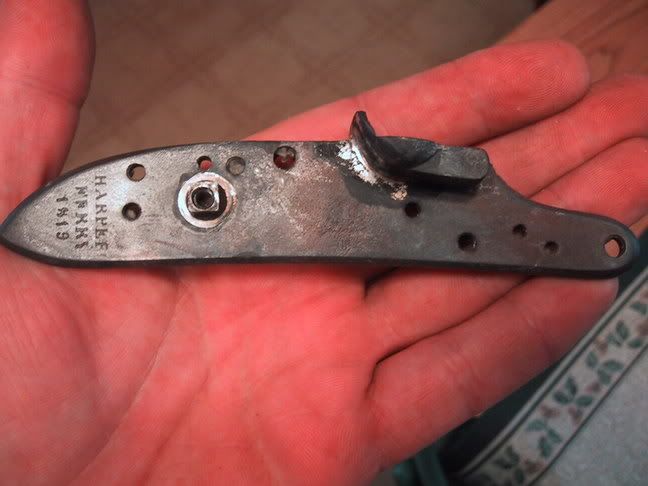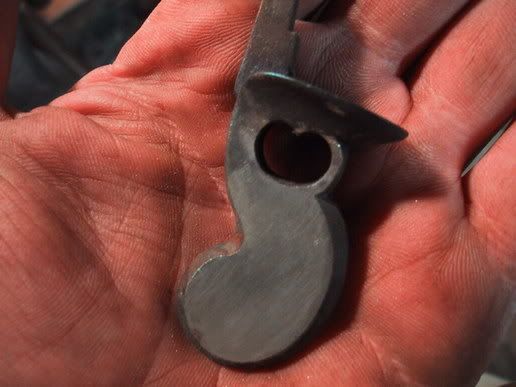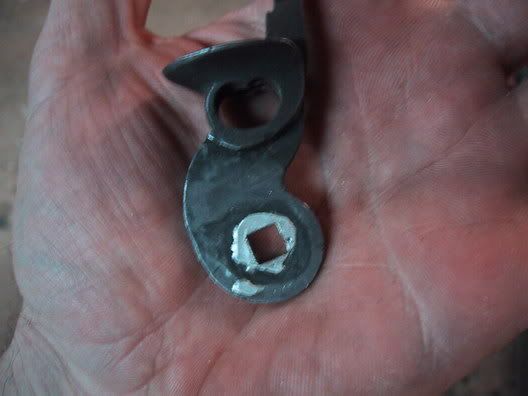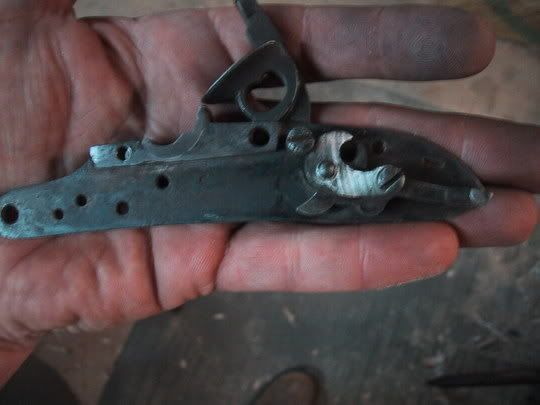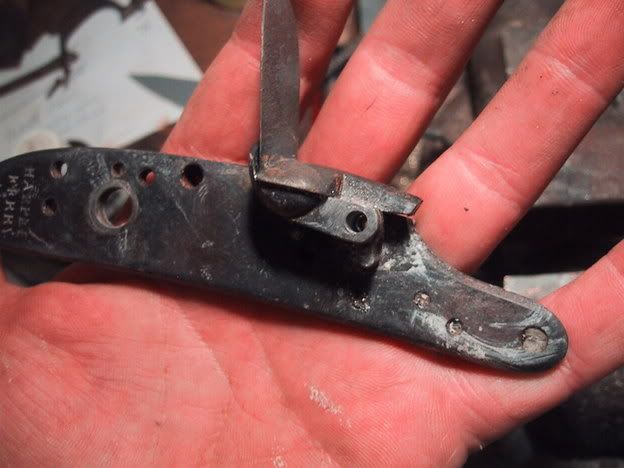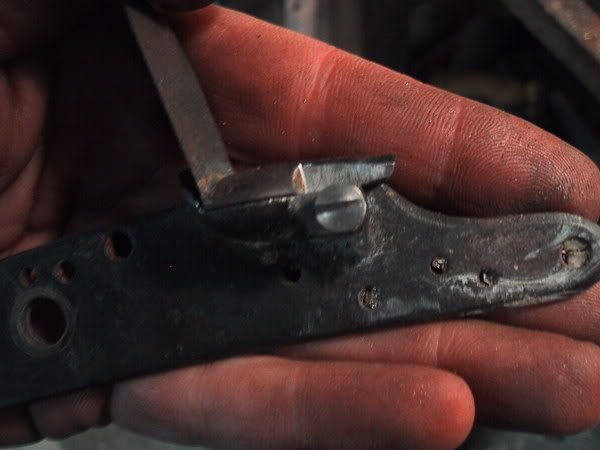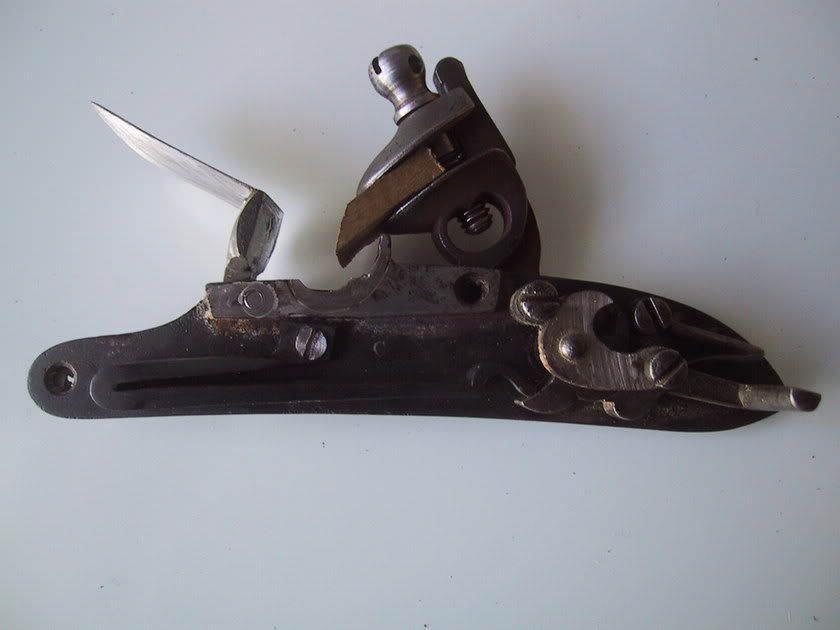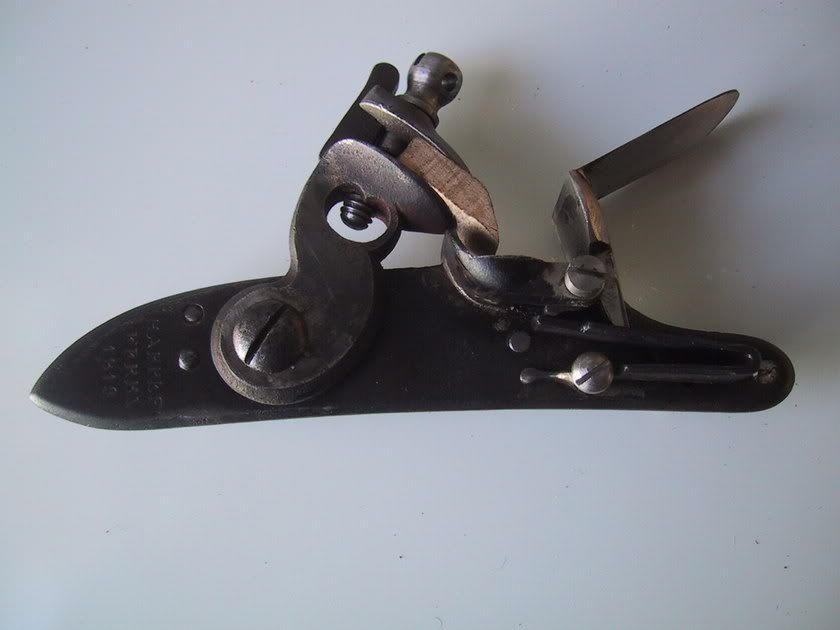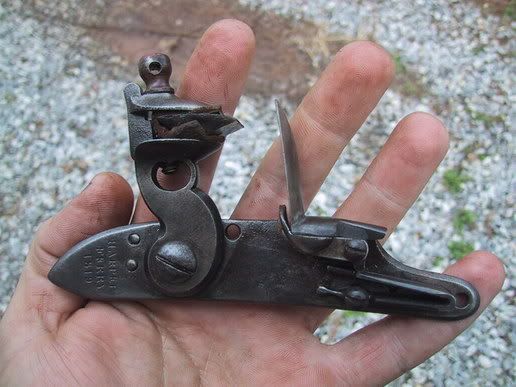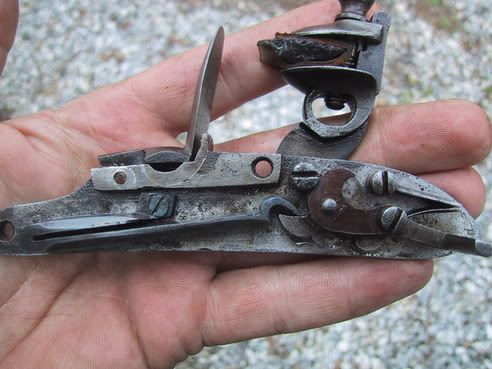Here's a lock that a customer sent with some extra parts to convert back to a flinter.
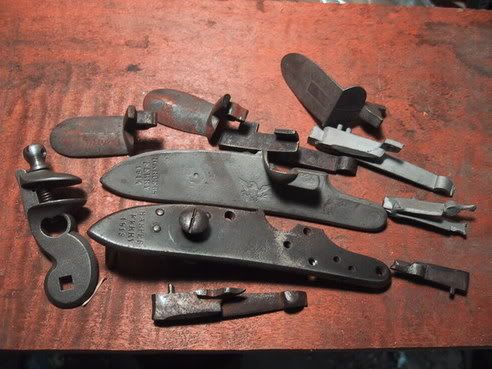
a gap from wear that needs to be dealt with
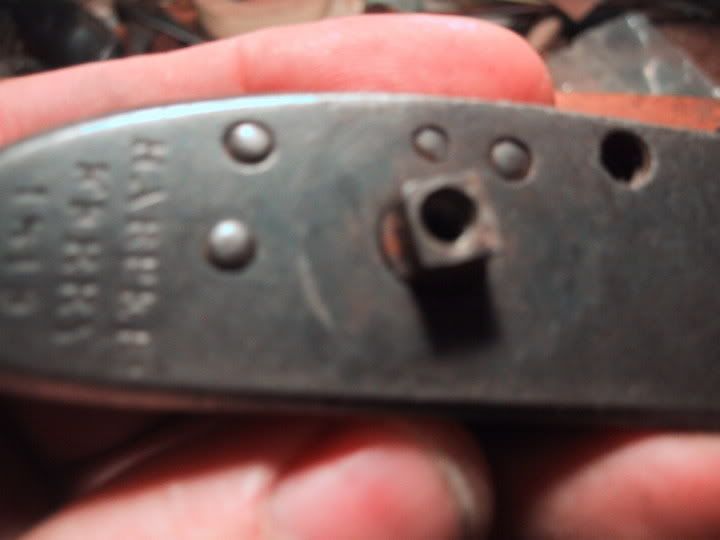
Main spring is broken
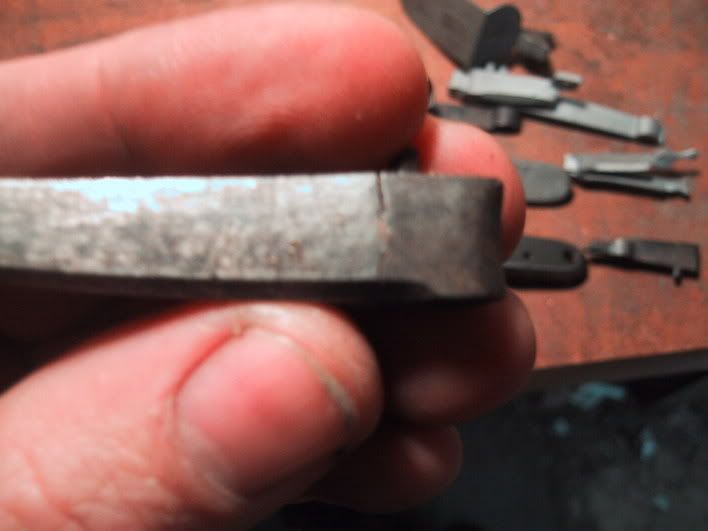
and the new casting when lined up with the tumbler (square) does not let the tumbler down far enough.
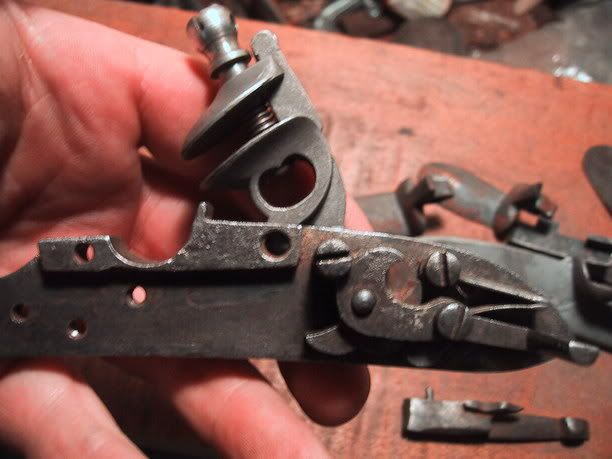
I will post more pics of my progess as I get farther along. :thumbsup:

a gap from wear that needs to be dealt with

Main spring is broken

and the new casting when lined up with the tumbler (square) does not let the tumbler down far enough.

I will post more pics of my progess as I get farther along. :thumbsup:




